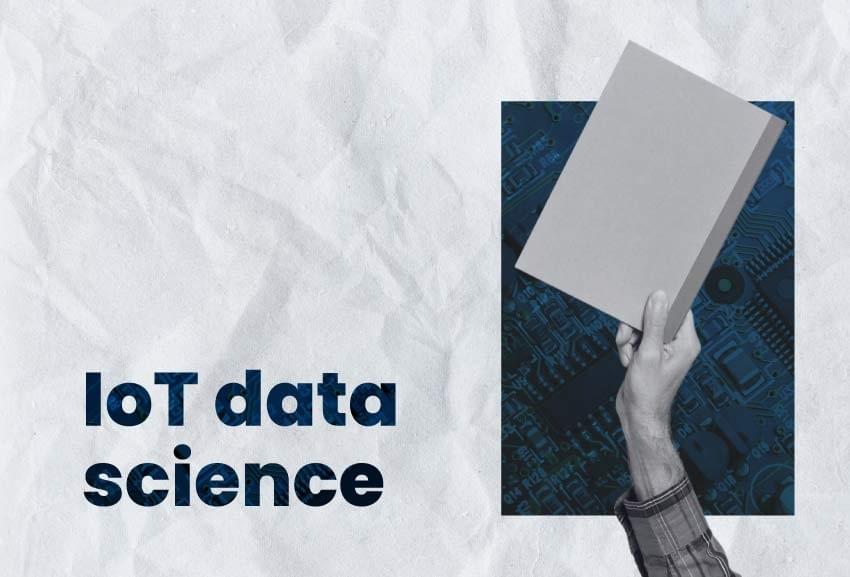The Internet of Things (IoT) and data science are two transformative technologies reshaping various industries. When combined, they offer immense opportunities but also present significant challenges. This intersection is a focal point for innovation, with the potential to revolutionise everything from healthcare to agriculture.

IoT refers to the network of physical objects embedded with sensors, software, and other technologies to connect and exchange data with other devices and systems over the internet. These objects, or "things," range from everyday household items to sophisticated industrial tools.
Data science involves using scientific methods, algorithms, and systems to extract knowledge and insights from structured and unstructured data. It combines various fields such as statistics, machine learning, and data analysis.
When IoT devices generate vast amounts of data, data science techniques can be applied to analyse and extract meaningful insights from this data. This synergy creates numerous opportunities but also comes with its own set of challenges.
Opportunities at the Intersection
Enhanced Decision-Making
IoT devices collect real-time data from various sources. By applying data science techniques to this data, businesses can gain actionable insights, leading to better decision-making. For example, in manufacturing, real-time data from IoT sensors can help predict equipment failures, allowing for proactive maintenance and removing downtime.
Improved Efficiency
Data science can optimise the performance of IoT systems. For instance, in smart cities, IoT devices monitor traffic patterns, and data analytics can suggest the most efficient routes, reducing congestion and saving time and energy.
Personalised Customer Experiences
IoT devices collect detailed data on user behavior. Companies can use this data to provide personalised recommendations and services. For example, smart home devices can learn a user's preferences and adjust settings accordingly, enhancing the user experience.
Innovative Business Models
The combination of IoT and data science can lead to new business models. Subscription-based services for products like smart thermostats or fitness trackers can provide ongoing data-driven insights and recommendations, adding value for consumers and creating unique revenue streams for companies.
Enhanced Security
IoT devices are prone to security risks. Data science can enhance security measures by analysing patterns and identifying potential threats. Machine learning algorithms can detect anomalies in real-time, providing a robust defense against cyberattacks.
Challenges at the Intersection
Data Privacy and Security
With the proliferation of IoT devices, massive amounts of personal data are being collected. Ensuring this data is kept secure and private is a significant challenge. Breaches can lead to severe consequences, including loss of trust and legal repercussions. Implementing robust security measures and adhering to data privacy regulations are essential but complex tasks.
Data Integration
IoT devices generate diverse data types from various sources. Integrating this data for meaningful analysis is challenging due to differences in formats, standards, and protocols. Effective data integration requires sophisticated tools and methodologies.
Scalability
The volume of data generated by IoT devices is enormous. Managing and analyzing this data in real-time requires scalable infrastructure and advanced algorithms. Developing systems that can handle this scale efficiently is a major challenge.
Interoperability
IoT devices from different manufacturers often use different communication protocols and standards, leading to interoperability issues. Ensuring these devices can communicate and work together seamlessly is crucial for maximising the benefits of IoT or data science.
Skill Gaps
The intersection of IoT and data science requires expertise in both fields. There is a growing demand for professionals with skills in data analytics, machine learning, and IoT technologies. Addressing this skill gap through education and training is vital for the successful integration of these technologies.
Case Study: Smart Agriculture
One of the most promising applications of IoT and data science is in agriculture. Smart agriculture uses IoT sensors to monitor soil moisture, temperature, and crop health. Data from these sensors is analysed to provide farmers with insights into optimal watering times, fertiliser application, and pest control.
For instance, a smart irrigation system can use real-time data to water crops precisely when needed, conserving water and enhancing crop yield. Predictive analytics can forecast weather conditions and pest outbreaks, allowing farmers to take proactive measures.
Conclusion
The intersection of IoT and data science presents unparalleled opportunities for innovation and efficiency across various industries, exemplified by initiatives such as data science training classes in Faridabad, Delhi, and other cities. However, it also poses significant challenges, particularly concerning data privacy, integration, scalability, interoperability, and skill development. Addressing these challenges necessitates a collaborative effort among businesses, governments, and educational institutions.
As these technologies continue to evolve, their integration will become even more seamless, unlocking new potentials and transforming our lifestyles and work environments. Embracing the opportunities and overcoming the challenges at this juncture will be crucial for realizing the full benefits of IoT and data science.
